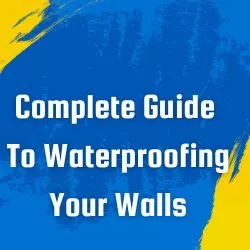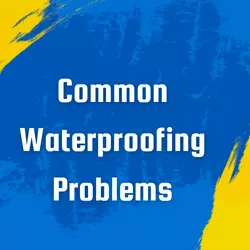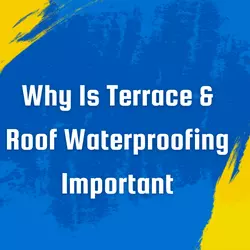Common Waterproofing Problems & Waterproofing Solutions
Common Waterproofing Problems & Solutions
Almost every one of us would like to grow up in a home that we can see being nurtured right in front of us. It’s no secret that we work hard to make our homes the best place to live and spend the rest of our lives with our families. Stains and black spots on our homes’ surfaces are the last thing we want. Not only can water seepage cause stains on your house, but it can also cause structural damage and allergies!
Water seepage is a common problem for homeowners around the world. A lot of things can cause water seepage in a building. It could be anything from a broken overhead tank to constant rain. Even a small leak in a pipe can cause water to trickle slowly through the building, causing damage to multiple parts and spots. What can you do to avoid all of this and protect your dream house? This problem can be solved with a process called Waterproofing, which is a systematic approach to making a structure water-resistant so it doesn’t get affected by rain or seepage from other sources.
How Does Waterproofing Work And Why Is It Important?
As the name suggests, waterproofing is a systematic process that makes a building waterproof or water-resistant, such that water is not able to penetrate into it or cause any damage to it. The waterproofing solutions are designed to make rooftops, exteriors, and interiors of residential properties watertight by limiting the penetration of water into them.
Despite the fact that it is an important task, many homeowners neglect to do it on a regular basis. It’s a serious issue, but it’s misunderstood as an inconvenience or an unnecessary expense. When you go to great lengths to make your dream home a reality, shouldn’t you make sure it’s well taken care of? The benefits of waterproofing your home are many, like making it stronger from the inside out, and keeping it from looking dull, flaky, and damp over time.
There are many benefits to waterproofing, including:
What are the common areas of seepage and their solutions?
Let’s look at some common areas where seepage enters and damages homes.
There are several places in the home where water seeps into the house, with the most common being the kitchen, sink area, and walls outside the bathroom. The natural movement and vibration of the walls can cause cracks in the walls, which can lead to nasty spots of water accumulating on them. Additionally, gaps between two structures, such as those between the frame of the window or door, switches and the wall, are also prone to allowing water to enter the structure.
Tips and tricks: Waterproofing Solutions
Inspect your roof regularly: You should inspect your roof regularly, regardless of the roof grade, even though flat roofs are the most vulnerable. Regardless of the material, commercial roofs should be inspected at least twice a year. Examine vents, drains, and any rooftop elements that may allow water to enter the building. Water stains and cracks are good indicators of where water may be pooling or entering the building, so inspect them thoroughly.
Regularly check the drains, plumbing and irrigation: Regular inspections are essential to spot these types of leaks. Make sure that your draining system is free from any obstructions or drips. Regardless of how small the leak may appear, it has the potential to become a much bigger issue in the future. It is always advisable to seek the advice of an expert whenever possible. You will not be able to fix the problem unless you are a professional plumber. It may even get worse.
Ensure all seals are maintained: This is equally true for all window seals, door seals, and even wall systems. Due to its porous nature, concrete is prone to water penetration. Even if leaks are not always visible, moisture can still penetrate the wall. If water damage is discovered, experts should be consulted.





